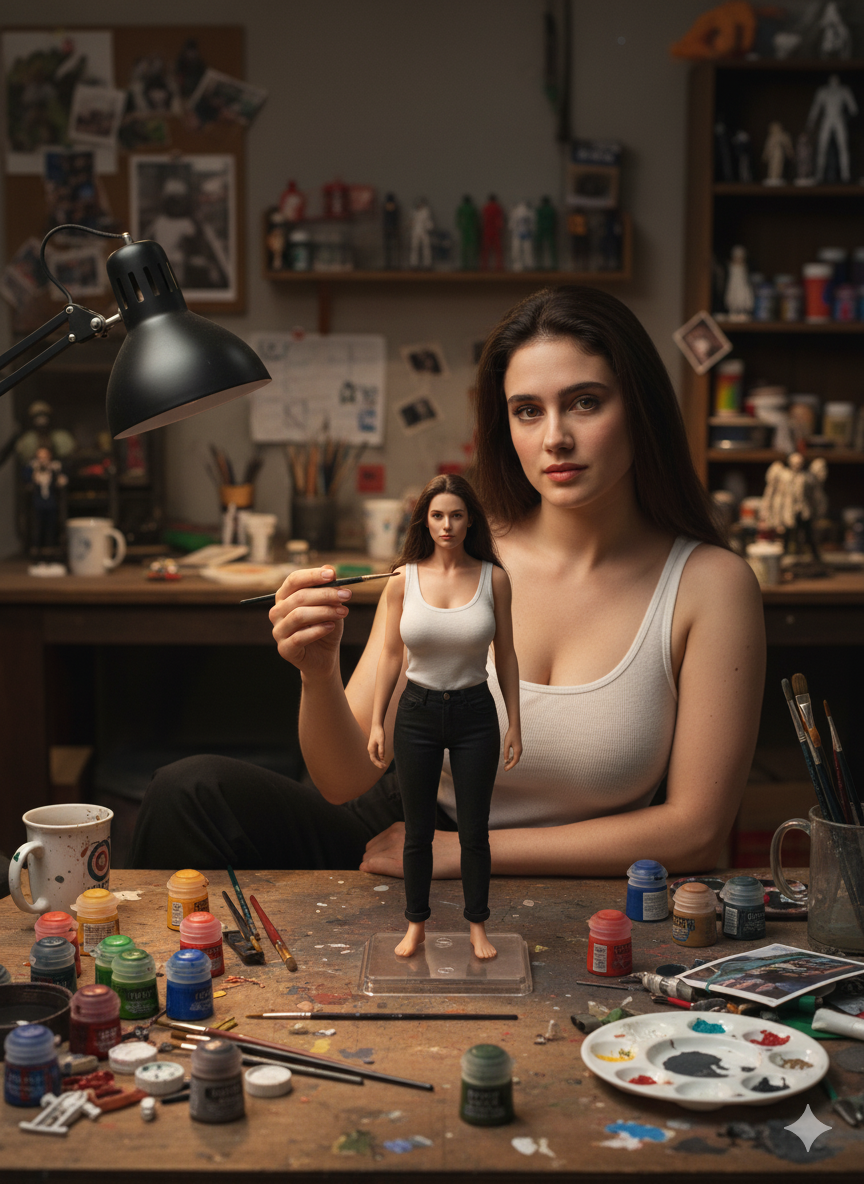How to Turn Yourself into a Figurine: Step-by-Step AI Tutorial
Ever dreamed of painting your own figurine that looks so real it could stand on your desk? With today’s AI tools, you can create a cinematic scene of yourself working on a hyper-realistic figure — and even bring it to life with video animation.
In this tutorial, I’ll guide you through the exact prompts and steps to create both a stunning 16:9 image and a cinematic video animation.
—
Step 1: Build the Cinematic Image
We start with the still image. This sets the mood, the lighting, and the environment.
Prompt (use 16:9 ratio):
> A hyper-realistic cinematic scene featuring the uploaded person carefully painting his own figurine at a desk and making direct eye contact with the camera. The figurine is standing on a transparent acrylic display base, but its size is larger than usual, making it appear more prominent and almost half the height of the real person. Both the person and the figurine wear the exact same outfit, matching in details. Around the desk, realistic painting tools, brushes, and hobby items are scattered, creating a creative workshop atmosphere. The figurine must look ultra-realistic with lifelike human skin tone, natural facial details, and premium PVC texture. Realistic indoor background, cinematic studio lighting, and sharp details.
What this does:
Places you at a desk with painting tools.
Creates a larger-than-life figurine of yourself.
Matches your outfit and details on both you and the figure.
Uses studio-quality lighting for a cinematic look.
—
Step 2: Animate the Scene
Once you have the image, it’s time to make it move. Animation adds realism and makes your creation feel like a movie scene.
Video Prompt:
> Animate the scene so that the person is gently brushing the figurine with subtle hand movements, keeping the person’s face unchanged and consistent. The figurine remains steady on the base while being brushed. Add a smooth cinematic near-orbit, moving slowly from left to right around the same position.
What this does:
Adds natural hand movements for realism.
Keeps your face clear and consistent.
Slowly moves the camera, giving a polished cinematic effect.
—
Pro Tips for the Best Results
✨ Use cinematic lighting — it makes both you and the figurine look like part of a movie scene.
✨ Keep the hand movements subtle — less is more when it comes to realism.
✨ Add authentic props like brushes and paints to sell the “creative workshop” vibe.
—
Final Result
When done right, you’ll have:
1. A 16:9 cinematic image of yourself painting a lifelike figurine.
2. A smooth animated video showing subtle hand movements and camera motion.
This isn’t just a fun project — it’s also a brilliant way to create unique TikTok edits, YouTube shorts, or even portfolio pieces that mix art with technology.
